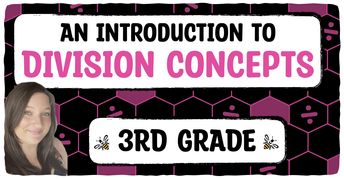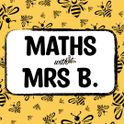34
or 100 for all content

An Introduction to Division Concepts | 3rd Grade | Division | Maths With Mrs B.
Ages 8-9
Self-Paced Course
12 pre-recorded lessons
3 weeks of teacher support
Choose your start date
1 year of access to the content
Enroll Now, Start Anytime
Go at your own pace
Your learner can start learning when they want and progress at the speed that works best for them.Start when you want.
Learn at your own pace
Access course material for a full year.
Get hands-on support from teacher.
What’s included

12 pre-recorded lessons

3 weeks
of teacher support
1 year access
to the content
Assignments
1 hour per week. Each lesson will include an activity to complete, with feedback provided upon submission.
Certificate of Completion
Learners will receive a certificate upon successfully completing the course.Class Experience

US Grade 3
Class Description This interactive course introduces learners to division through engaging video lessons, scaffolded activities, independent practise, and problem-solving challenges. Learners will explore division as sharing and grouping before discovering its connection to multiplication through fact families. What will be taught? 🐝 Understanding division as sharing equally 🐝 Exploring division as grouping 🐝 Recognising fact families and the link between multiplication and division How is the class structured? Each week includes: 🐝 A video lesson introducing the concept 🐝 A scaffolded activity for guided practise 🐝 An independent worksheet to apply skills 🐝 Problem-solving and reasoning challenges Marking and Feedback All completed work will be marked, with feedback provided to support understanding and progress. Grade 3 Common Core Standards for Mathematics 📌 CCSS.MATH.CONTENT.3.OA.A.2 Interpret whole-number quotients of whole numbers, understanding division as partitioning objects into equal shares or groups. 📌 CCSS.MATH.CONTENT.3.OA.A.3 Use multiplication and division within 100 to solve word problems involving equal groups, arrays, and measurement quantities, employing drawings and equations with symbols for unknown numbers. 📌 CCSS.MATH.CONTENT.3.OA.A.4 Determine the unknown whole number in multiplication or division equations relating three whole numbers. 📌 CCSS.MATH.CONTENT.3.OA.B.6 Understand division as an unknown-factor problem, recognizing the relationship between multiplication and division. 📌 CCSS.MATH.CONTENT.3.OA.C.7 Fluently multiply and divide within 100, using strategies such as the relationship between multiplication and division or properties of operations.
Learning Goals

Understand that division is a way to share objects into equal groups.
Solve simple division problems by sharing objects into equal groups.Syllabus

Curriculum
Follows Teacher-Created Curriculum
Standards
Aligned with Common Core State Standards (CCSS)12 Lessons
over 3 WeeksLesson 1:
Division as Sharing - Part 1
Learn how division works as sharing and how to split objects into equal groups. 1 assignment
7 mins of video lessons
Lesson 2:
Division as Sharing - Part 2
Practise sharing objects equally to understand the concept of division. 1 assignment
Lesson 3:
Division as Sharing - Part 3
Apply your understanding of sharing by solving division problems independently. 1 assignment
Lesson 4:
Division as Sharing - Part 4
Explore problem solving and reasoning activities. 1 assignment
Other Details

Learning Needs
This course supports diverse learning needs with clear, step-by-step explanations, visual models, and structured activities. Learners can work at their own pace, replay videos, and build confidence with repeated practice.

Supply List
Learners will need to either print the activities or use a website/app that allows them to annotate PDFs digitally. This will ensure they can complete the worksheets alongside the video lessons. A pencil and paper may also be useful for working out answers.

External Resources
Learners will not need to use any apps or websites beyond the standard Outschool tools.
Offered by
Teacher expertise and credentials

1 teacher has a Bachelor’s degree
Bachelor’s Degree in Education from Glyndŵr University
I am a fully qualified UK-based educator with over 10 years of experience teaching in primary schools, teaching children aged 3-11. I have specialised in mathematics, focusing on supporting both children and adults in developing confidence and skills in maths. I work directly with primary schools across my county to enhance maths understanding through engaging and accessible teaching methods.